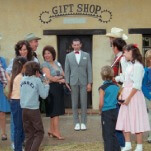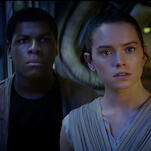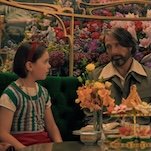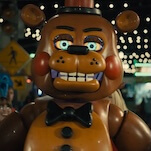Direct from video: The rise of the VHS collector

MPI Media Group sits along a quiet, two-lane road, in that anonymous place outside any major city where suburban and rural begin to blend together. No one, especially not the kids who grew up prowling the horror sections of local video stores, would ever guess that the Faces Of Death videos, with their garish illustrations of skulls and snakes and bloodthirsty surgeons, came from this building. Neither would any of MPI’s more “legitimate” clients, for that matter, because for years the company listed the address of its trash-horror imprint Gorgon Video as the vacant lot next door. (Like any independent video company, especially one located in the south suburbs of Chicago, MPI does a little bit of everything, and executives were loath to scare off public-television clients with their blood-drenched genre stepchild.) Ironically, now that shameful horror label is one of MPI’s most promising ventures.
Gorgon Video first felt the stirrings of a resurgent VHS culture in 2009; its parent company was producing Ti West’s ’80s horror homage The House Of The Devil, and West wanted the movie to be released on VHS as well as DVD. The VHS quickly sold out, announcing the format’s transformation from an outdated curiosity into a current, commercially viable medium. But resources were stretched thin, and it took a few years for three dedicated MPI employees—out of a staff of 22—to get around to reviving Gorgon. (The website finally went live in June of this year.)
MPI’s staff cleaned up the Gorgon logo but haven’t changed anything else, which is exactly the point of a retro throwback label. They’re not bothering with an aggressive marketing strategy, trusting that interested parties will come to them. Instead they display original paintings by local artists, some of them unidentified and untraceable, that were commissioned as box art for Gorgon releases with titles like Night Of The Bloody Apes, Death Dream, Children Shouldn’t Play With Dead Things, and Don’t Look In The Basement. Obscure even among horror fans, these paintings would probably have been thrown in the trash five years ago. Now they’re treated as objets d’art at conventions like Cinema Wasteland and Mondocon, where people stop to pose for pictures with the original artwork for the VHS release of a movie that most people have never even heard of.
These fetishists fall into two broadly defined camps: the nostalgists, who are looking to relive childhood memories, and the aesthetes, who are drawn to the roughhewn beauty of low-budget horror. Both, like any group of collectors, err on the completist side—collecting every title from long-defunct distributors like Unicorn Video and Midnight Video is a common goal—and live to unearth hard-to-find or undiscovered videos that will make fellow hobbyists seethe with jealousy. The packaging of the tape itself is important: Clamshell and big-box tapes are more desirable than the run-of-the-mill slipcase, in no small part because the box art is bigger. Box art is a huge draw for VHS collectors, who collect outstanding (or outrageous) VHS box art and create coffee table books and, more recently, art exhibits. Some of these titles are valuable exclusively for the box art: The cover of Evils Of The Night, for example, depicts a suspiciously Millennium Falcon-esque spaceship (an extra cockpit keeps the illustration out of copyright infringement territory) and a floating orb containing skeletal bloodsucking aliens, neither of which actually appear in the rather forgettable movie. But it looks cool, so who cares?
The obsession with box art points to a key aspect of the VHS appeal: In some ways, it’s the quintessential expression of movies as physical media. Only the most dedicated (and wealthy) film fan would attempt to undertake the expensive and labor-intensive process of collecting 16 mm and 35 mm prints, and DVDs—as anyone who worked at a video store in the ’90s or early ’00s knows—scratch if you look at them funny. (Like CDs, DVDs are less than collectible at the moment, although they may end up having their day eventually.) A VHS, on the other hand, is a big, weighty, practically indescructable object that looks good lined up on a shelf, that makes a satisfying “ka-chunk” sound when you load it into the VCR, and that comes in an attractive package you can pick up and turn over in your hands as you watch the movie contained within. VHS collectors are like vinyl collectors, but with one big unspoken caveat: No one can claim that anything looks better on VHS.
Things can look good on VHS, or appropriate on VHS, but except in the case of movies that were shot on video and don’t have any other reference point, saying a movie looks better on VHS than on celluloid is a difficult position to defend. There’s the matter of the aspect ratio—4:3 to cinema’s 1.85:1 or 2.39:1—which results in either videos that cut off the picture via the dreaded “pan and scan,” or open-matte videos that show things the director never intended for viewers to see. (The open-matte method, sometimes used to convert films to 4:3 for VHS and old-school TV, actually shows more of the screen than appears in the theatrical version, making boom mics a common sight on VHS releases.) Then there’s the matter of the grain, the result of age or wear, with its accompanying color distortion, static, fade, and fuzz, although this particular characteristic has become less of a limitation and more of an aesthetic choice—there are now several After Effects plug-ins designed to give digital video the look of a well-worn VHS.








































